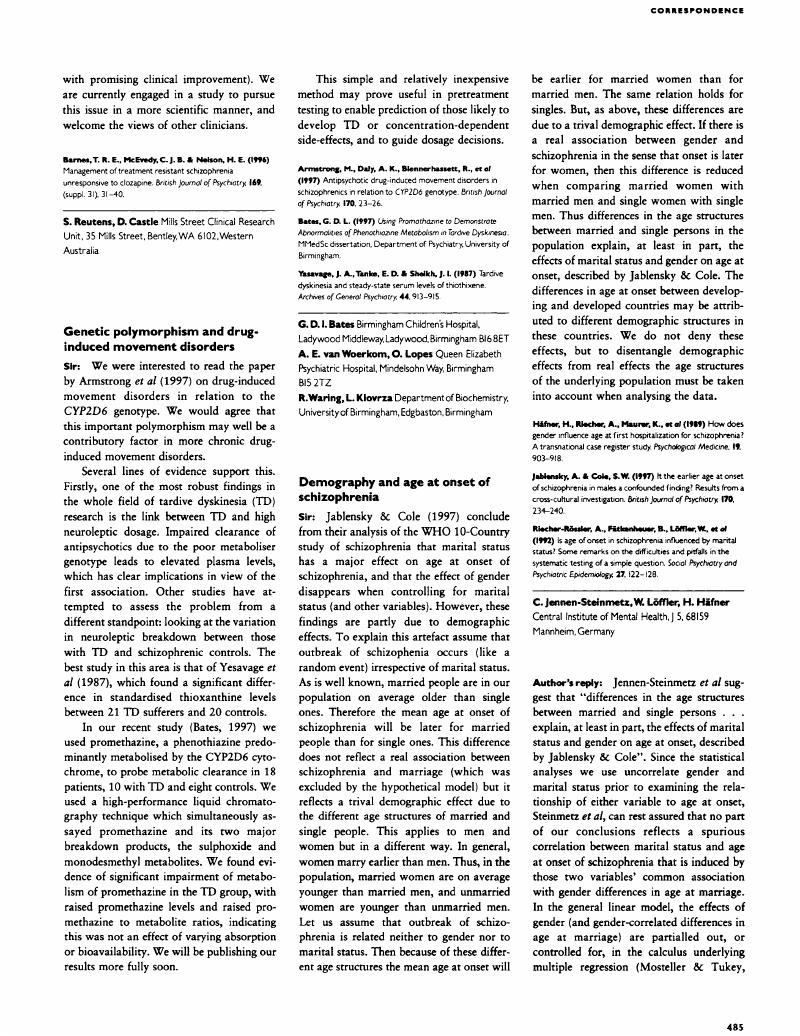No CrossRef data available.
Article contents
Genetic polymorphism and drug-induced movement disorders
Published online by Cambridge University Press: 03 January 2018
Abstract
An abstract is not available for this content so a preview has been provided. As you have access to this content, a full PDF is available via the ‘Save PDF’ action button.

- Type
- Columns
- Information
- Copyright
- Copyright © 1997 The Royal College of Psychiatrists
References
Armstrong, M., Daly, A. K., Blennerhassett, R., et al (1997) Antipsychotic drug-induced movement disorders in schizophrenics in relation to CYP2D6 genotype. British Journal of Psychiatry, 170, 23–26.Google Scholar
Bates, G. D. L. (1997) Using Promathazine to Demonstrate Abnormalities of Phenothiazine Metabolism in Tardive Dyskinesia.
MMedSc dissertation, Department of Psychiatry, University of Birmingham.Google Scholar
Yasavage, J. A., Tanke, E. D. & Sheikh, J. I. (1987) Tardive dyskinesia and steady-state serum levels of thiothixene. Archives of General Psychiatry.
44, 913–915.Google Scholar





eLetters
No eLetters have been published for this article.